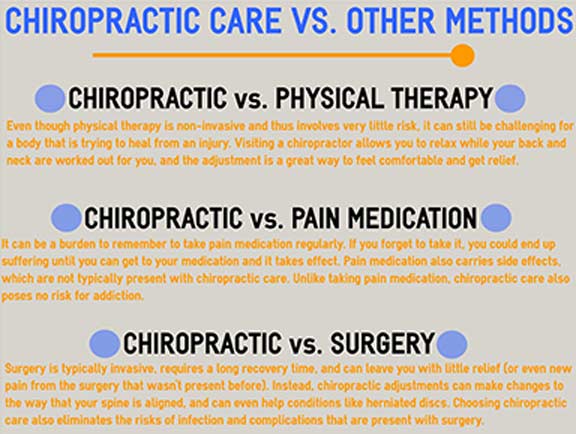As you sit there, perhaps really feeling an ache of pain in your neck, have you ever thought the detailed structures that compose your cervical back? Understanding how shooting back pain , discs, and nerves communicate in this area can shed light on why neck discomfort can be so consistent and debilitating. By checking out the structures of cervical spinal column anatomy and its implications for neck pain, you might reveal insights that could assist you much better take care of or perhaps prevent those bothersome pains and rigidity.
Relevance of Cervical Back Anatomy
Recognizing the significance of cervical spinal column anatomy is vital in understanding the intricacies of neck discomfort. The cervical spine, composed of 7 vertebrae, plays a vital duty in sustaining the head's weight and facilitating activity. It houses the spinal cord, which sends messages between the brain et cetera of the body. Furthermore, chiropractor near me open today and supplies structural security to the neck region.
Additionally, the cervical spine enables a vast array of motion, enabling you to transform your head, tilt it sideways, and nod backwards and forwards. Each vertebra has certain functions and features that add to the total adaptability and security of the neck. Comprehending the anatomy of the cervical back can assist you understand just how injuries or degenerative problems in this area can lead to neck discomfort and related signs.
Parts of the Cervical Spine
When discovering the components of the cervical spinal column, it comes to be evident that its framework consists of seven vertebrae, identified C1 to C7, stacked on top of each other. These vertebrae are important as they provide assistance to the head and enable a wide variety of activity in the neck.
The upper vertebra, C1, also known as the atlas, sustains the skull and allows the nodding activity of the head. Directly under C1 is the C2 vertebra, referred to as the axis, which allows for the rotation of the head back and forth.
Moving down the cervical spine, each vertebra plays a vital duty in preserving the spinal column's adaptability and stability. In between each vertebra are intervertebral discs that function as pillows, soaking up shock and avoiding the vertebrae from rubbing versus each other.
Recognizing the parts of the cervical back is necessary in comprehending just how the back functions and its possible impact on neck discomfort.
Partnership In Between Spinal Column and Neck Pain
The link in between the back and neck pain is an important element of comprehending musculoskeletal pain. Your spinal column, particularly the cervical area, plays a substantial function in sustaining your head and enabling different activities. When there's a problem in the spine, such as a herniated disc or imbalance, it can straight impact the surrounding cells and nerves, leading to neck pain. https://caraccidentchiropractorne06283.targetblogs.com/32371989/contrasting-standard-physical-treatment-strategies-vs-new-comes-close-to-for-neck-and-back-pain-relief , injuries, and degenerative problems can all add to spine-related neck discomfort.
It's essential to acknowledge that the spine and neck function as a natural device. Any kind of abnormalities or imbalances in the spine can trigger stress on the neck muscles and ligaments, leading to pain and stiffness.
Conclusion
Since you have a fundamental understanding of cervical spinal column composition and its link to neck pain, you can much better value the intricacies of your own neck discomfort. Keep in mind, the health of your cervical spine plays a crucial duty in sustaining your head and assisting in motion, so it is very important to look after it via correct pose, workout, and routine exams with a medical care specialist. Keep educated and positive concerning your spinal column health to avoid and handle neck discomfort successfully.
